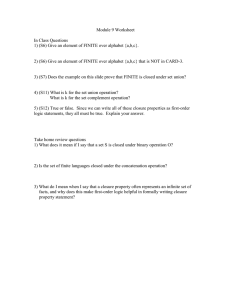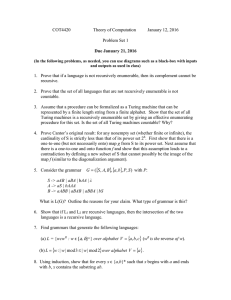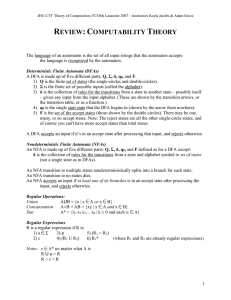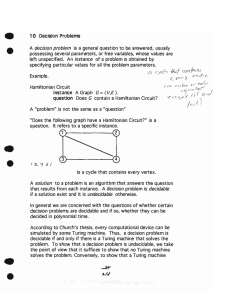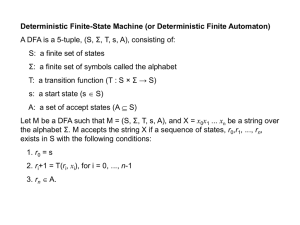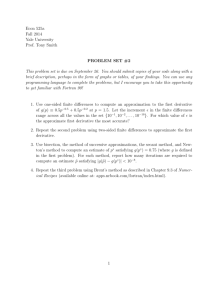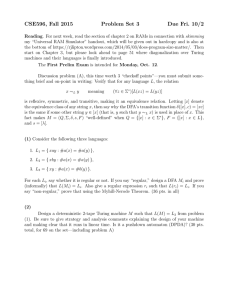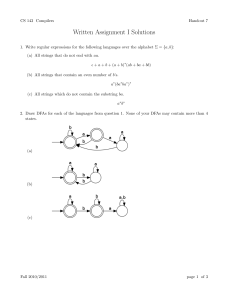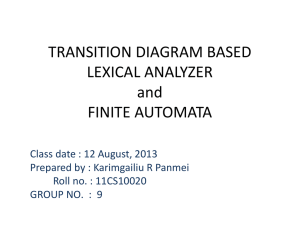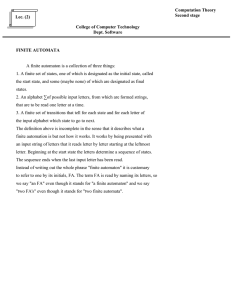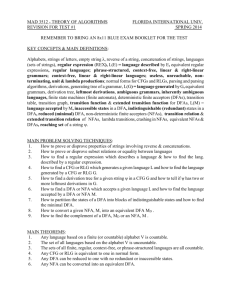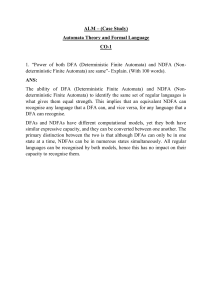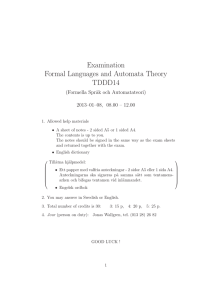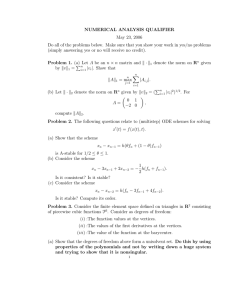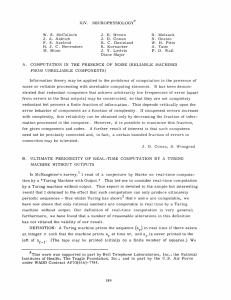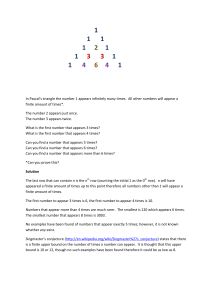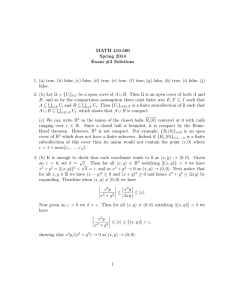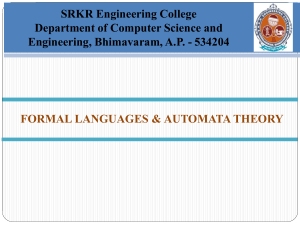Does Not Compute 5: DFA/NFA Equivalence Turing Machines
advertisement
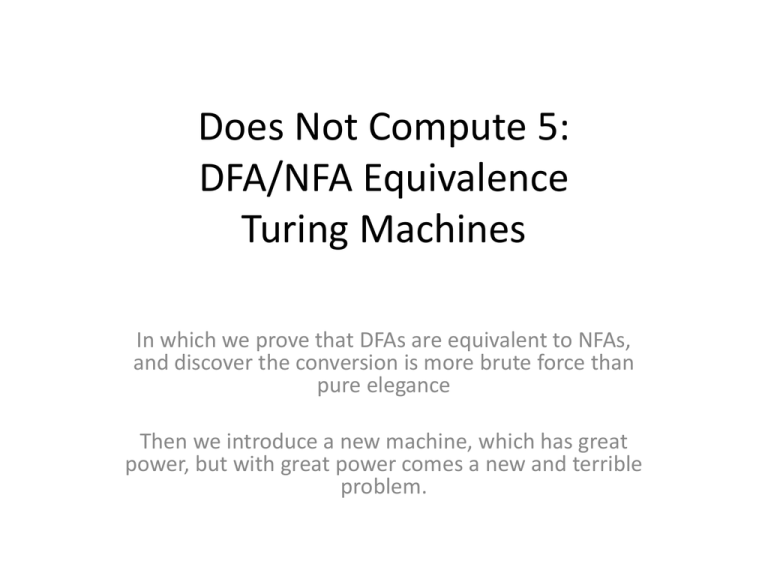
Does Not Compute 5:
DFA/NFA Equivalence
Turing Machines
In which we prove that DFAs are equivalent to NFAs,
and discover the conversion is more brute force than
pure elegance
Then we introduce a new machine, which has great
power, but with great power comes a new and terrible
problem.
Alan Turing
Our New Machine
• A 7-tuple (Q, E1, E2,T, q0, F1, F2)
– Q is a finite set of states
– E1 is a finite set called the alphabet (usually {0, 1} or {a,b}) not
containing the special blank symbol □
– E2 is a finite set called the alphabet containing the special blank
symbol □, E1, and maybe a few odds and ends
– T : Q x E2 → Q x E2 x {L,R} is the transition function
– q0 is the start state
– F1 is the accept states
– F2 is the reject states
To Come In The Second Half
Some extremely cool stuff:
• The Turing-Church Hypothesis, which touches on
the fundamental question of “What is
Computing?”
• The existence of well-defined mathematical
problems no machine can compute solutions for
(including modern computers)
• Efficiency, discussed at long last, including P/NP
problem which is one of the great unsolved
questions of modern mathematics
• Even more fun playing with interesting machines
Feedback From You
1. What is one thing you particularly liked about
the class so far?
2. What is one thing that could be improved
about the class so far?
3. Sum of your feeling about the class in 1 or 2
short sentences.
